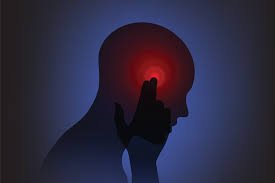
First of all,
Few things are as well recognized and experienced in the field of medicine as pain. Pain, in all its forms—chronic discomfort, acute damage, and post-surgical recovery—is an indisputable aspect of the human condition. Humanity has been looking for practical solutions to calm and cure this common illness for millennia. The search for pain alleviation has been continuous, ranging from traditional herbal cures to state-of-the-art medical technologies. However, there has been a recent upsurge in creative methods and ground-breaking fixes meant to radically alter our understanding of and response to pain rather than merely covering it up. This piece examines some of these revolutionary developments in pain treatment and considers how they can change how we perceive and manage pain.
Comprehending Pain:
Comprehending the nature of pain is essential before exploring novel approaches to alleviate it. Pain is a complicated, multidimensional experience with psychological as well as physical components. It acts as a warning indication, informing the body of impending danger or damage. On the other hand, chronic pain can be crippling and have a major negative influence on quality of life if it lasts long after the initial injury has healed.
The traditional approach to pain management has been to treat symptoms with medicine, physical therapy, and, in extreme circumstances, surgery. Although many people have found success with these techniques, they frequently have drawbacks, including dependency problems, side effects, and insufficient alleviation. Furthermore, they don’t deal with the fundamental processes that underlie pain perception.
The Development of Non-Pharmaceutical Methods
Growing awareness of the drawbacks of conventional pain management techniques has led to a move away from pharmaceutical treatments in recent years. These methods provide an all-encompassing approach to pain treatment by attempting to reduce pain without the need of drugs.
One such strategy is mindfulness-based stress reduction (MBSR), which helps people manage and lessen the intensity of their suffering by combining body awareness, yoga, and mindfulness meditation. MBSR has been shown in numerous trials to be beneficial in lowering chronic pain and enhancing general well-being.
Similarly, by targeting maladaptive thought patterns and behaviors linked to pain, cognitive-behavioral therapy (CBT) has become a potent treatment for controlling chronic pain. CBT assists in ending the cycle of suffering and unpleasant feelings by teaching patients coping mechanisms and relaxation techniques.
Utilizing Technology’s Power:
Technological developments have also been crucial in revolutionizing pain management. Novel technologies, such as wearable technology and virtual reality (VR) therapy, are providing new avenues for pain relief and improving patient outcomes.
By applying tailored electrical stimulation to nerve terminals, wearable medical devices like transcutaneous electrical nerve stimulation (TENS) units and electrotherapy patches can interfere with pain signals and encourage the release of endorphins, the body’s natural analgesics. These tools provide a non-invasive, drug-free substitute for treating both acute and persistent pain.
In contrast, virtual reality therapy submerges patients in virtual worlds designed to divert their attention from their discomfort and encourage relaxation. Virtual reality therapy can change how pain is perceived and lessen the need for pharmacological interventions by utilizing several sensory modalities. Furthermore, studies have demonstrated its exceptional efficacy in managing procedure pain and anxiety inside hospital environments.
Novel Approaches to Pain reduction:
Researchers are looking into novel approaches to pain reduction that focus on the fundamental processes of pain perception in addition to non-pharmacological interventions and technological improvements. One such strategy is neurostimulation, which modifies the activity of pain-signaling pathways in the brain and spinal cord by applying electrical or magnetic impulses.
For example, transcranial magnetic stimulation (TMS) is a non-invasive and focused method of pain management that stimulates particular brain areas involved in pain processing using magnetic fields. In a similar vein, electrical pulses are delivered to the spinal cord by spinal cord stimulation (SCS), which blocks pain signals before they reach the brain.
The application of cannabinoids—compounds obtained from the cannabis plant—for the treatment of pain is a potentially fruitful field of study. In particular, cannabidiol (CBD) has drawn interest due to its excellent safety profile and analgesic effects. Preliminary study suggests that cannabis may be a promising alternative to conventional pain drugs, but additional research is necessary to fully understand the efficacy and safety of cannabinoids for pain treatment.
Integrative Pain Management:
As our knowledge of pain expands, so does the significance of integrative pain management strategies, which integrate complementary and conventional therapies to address pain’s multifaceted character. Depending on the specific requirements of each patient, integrative pain treatment programs frequently combine a range of modalities, such as medicine, physical therapy, acupuncture, massage therapy, and nutritional counseling.
Integrative pain management targets the psychological, emotional, and physical components of pain in an effort to enhance overall quality of life and maximize patient results. Furthermore, integrative therapies lessen dependency on pharmaceutical interventions by promoting self-management skills and encouraging patients to actively participate in their own care.
In summary,
The field of pain treatment is experiencing a significant upheaval due to advancements in science, technology, and our comprehension of the intricacies involved in pain perception. Millions of people who are suffering from pain now have new hope thanks to groundbreaking treatments that range from non-pharmacological therapies and cutting-edge technologies to creative strategies that focus on the underlying causes of pain. We have the chance to change how we view and feel pain in addition to healing the body by adopting a holistic and integrative approach to pain management. A world in which pain is no longer an obstacle to live life to the fullest seems promising as we continue to push the boundaries of pain science.
RELATED POSTS
View all


